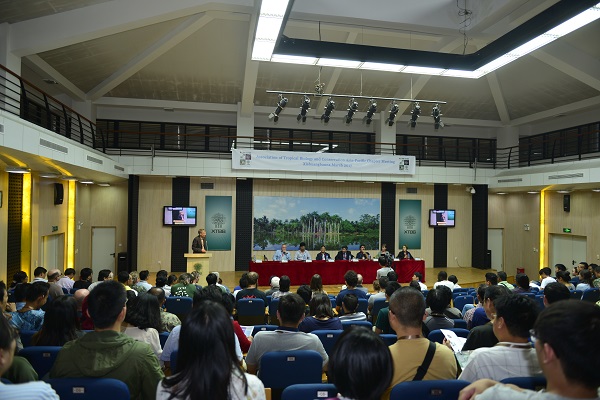
Biodiversity in the Asia Pacific region is exceptionally rich but unfortunately in fast decline. Over the past 20 years, 22% of the land in Xishuangbanna, one of the most diverse regions of China, has been converted to rubber plantation and tea, resulting in large-scale fragmentation and habitat loss.
Mankind is facing more and more challenges to protect regional biodiversity and need cooperative efforts to tackle the situation. That is what brings tropical biologists and conservation scientists from countries in the Asia-Pacific region together for the Annual meeting 2017 of the Association for Tropical Biology and Conservation (ATBC) Asia-Pacific Chapter, looking for ways to build conservation research capacity in the Asia-Pacific region.
Over 300 biologists and conservationists gathered together at Xishuangbanna Tropical Botanical Garden (XTBG) to understand the evolution of biodiversity and discuss how to best conserve it under increasingly challenging conditions.
“Scientists have guided government wildlife and forestry policy, influenced the creation of new protected areas and advised on their management,” said Prof. Antony Lynam, chairman of ATBC Asia Chapter.
Scientists have also engaged in innovative collaborations to employ integrated technology solutions for measuring conservation effectiveness, and helped shape the conservation agenda for a range of endangered species threatened with extinction, said Prof. Antony Lynam.
However, science alone may not be enough to save tropical biodiversity at dire risk of disappearing, and conservation sites and landscapes altered by human impacts, scientists at the meeting agreed.
“Government-run protected areas are one of the main tools for stemming the ongoing global biodiversity crisis caused by habitat loss, fragmentation and other anthropogenic pressures,” said Prof. ZHOU Jinfeng, secretary general of the China Biodiversity Conservation and Green Development Foundation.
According to ZHOU Jinfeng, non-government organizations (NGOs) are implementing new management models to ensure that the existing protected areas are successfully cared for, and to encourage wider community participation to proactively take collective responsibility for biodiversity conservation.
The four-day meeting from March 25-28 also discussed cooperation between international research institutions and NGOs.
Joint efforts will be made to deal with the regional biodiversity conservation issues and secure a brighter future for the region’s biodiversity, according to Prof. CHEN Jin, director of XTBG.

Annual meeting 2017 of the Association for Tropical Biology and Conservation (ATBC) Asia-Pacific Chapter at XTBG (Image by DUAN Qiwu)

Prof. Antony Lynam, chairman of ATBC Asia Chapter, makes plenary presentation (Image by DUAN Qiwu)

86-10-68597521 (day)
86-10-68597289 (night)

86-10-68511095 (day)
86-10-68512458 (night)

cas_en@cas.cn

52 Sanlihe Rd., Xicheng District,
Beijing, China (100864)

